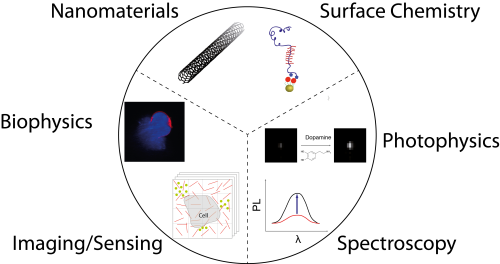
Our goal is to explore complex chemical and biological systems by using and developing new optical methods (spectroscopy, microscopy) and materials (nanomaterials, quantum materials, biological matter). Below you can find some examples of recently published work.
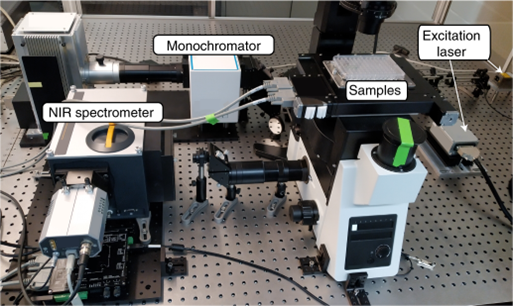
Typical home-built setup for widefield microscopy and spectroscopy in the near infrared (NIR).
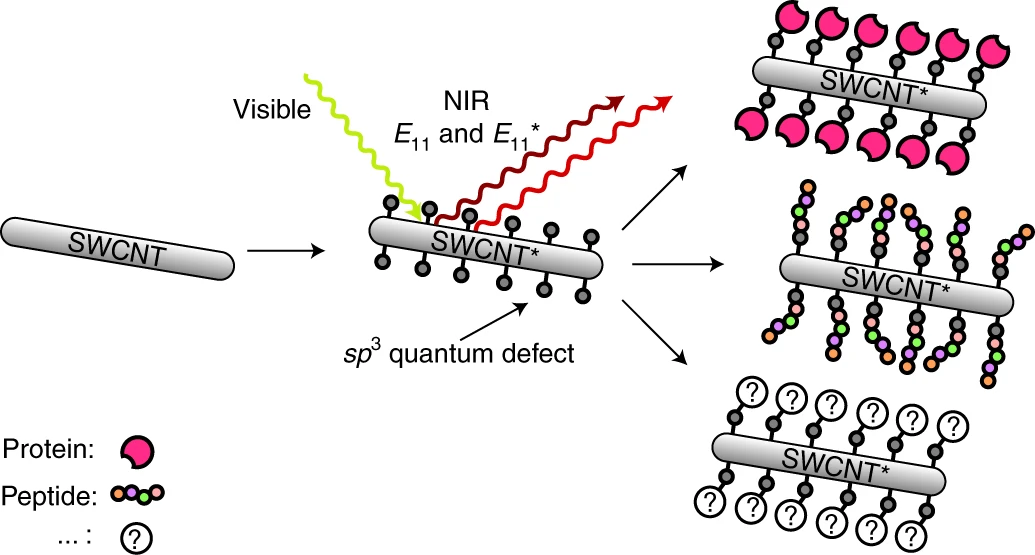
Quantum defect chemistry to tailor photophysics and molecular recognition (Mann et al. Nature Protocols 2022)
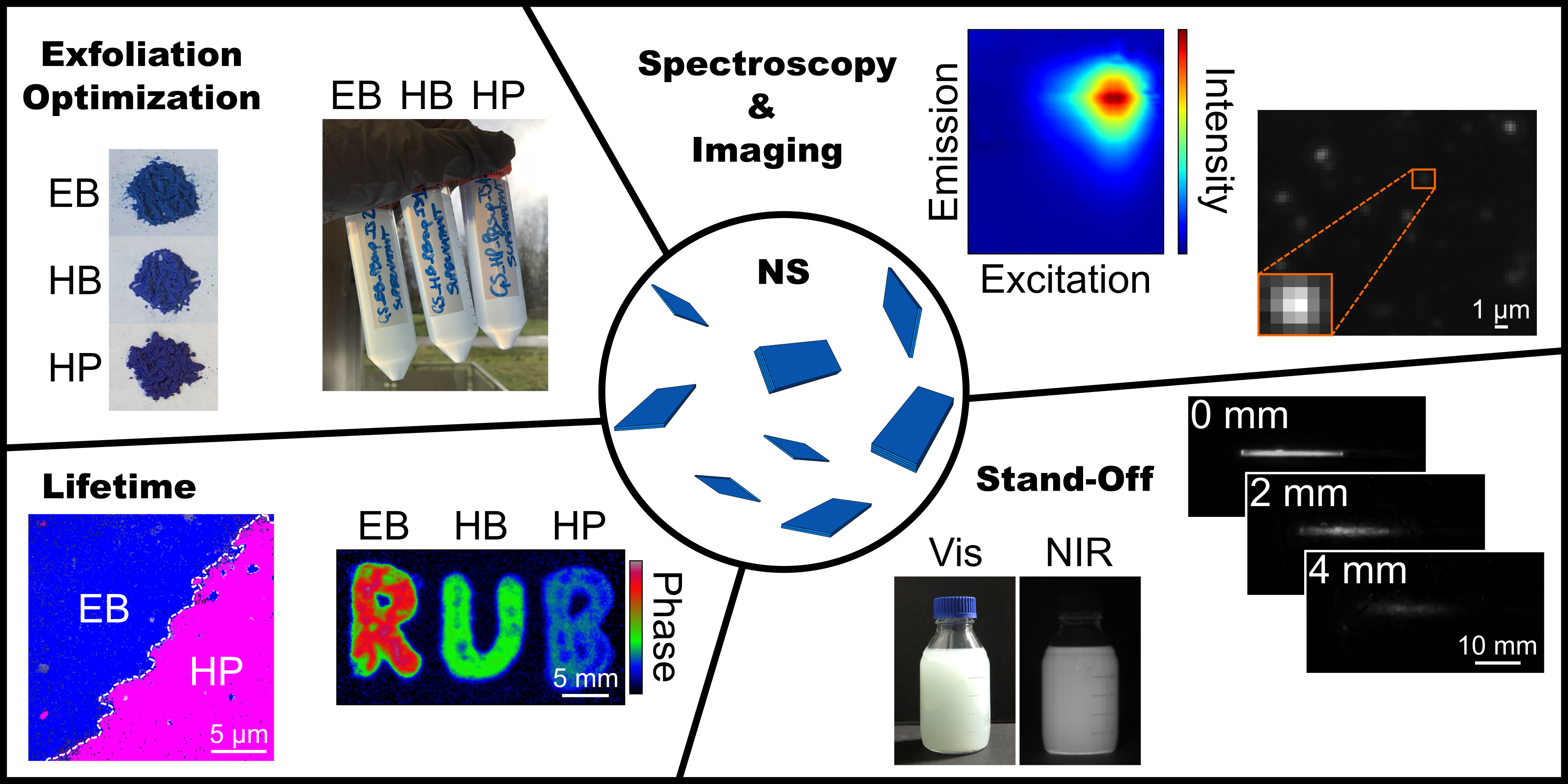
2D materials with novel optoelectronic properties for photonics (Selvaggio et al. Nature Communications 2020, Selvaggio et al. Nanoscale 2022)
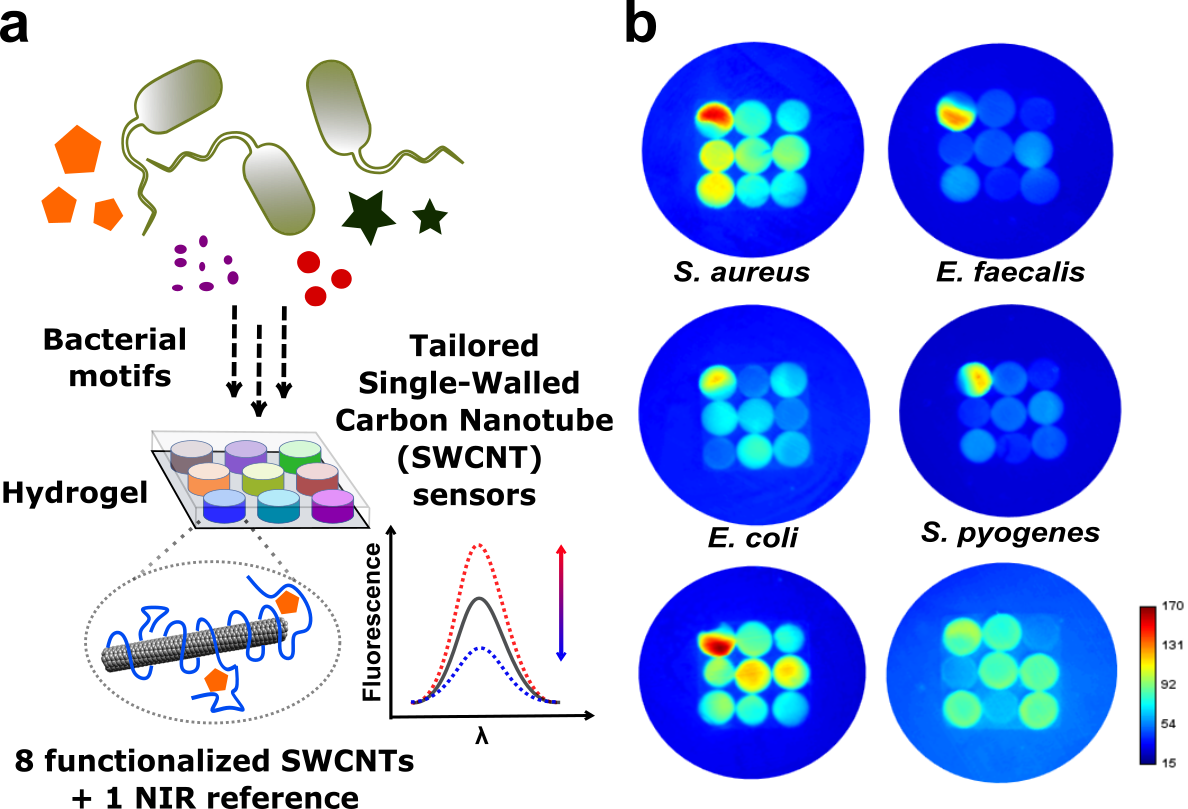
Fluorescent nanosensors are used to identify bacteria with light (Nißler et al. Nature Comm. 2020)

Nanosensors visualize the release of neurotransmitters from cells, which is important to understand how the human brain works and no treat diseases such as Parkinson´s disease (Elizarova et al. PNAS 2022)
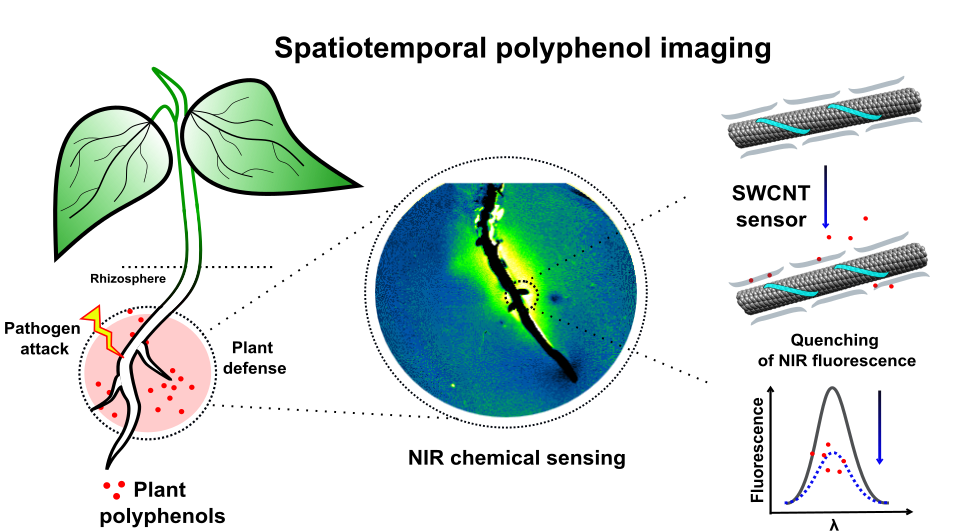
Nanosensors monitor plant health with light, which is a first step towards precision agriculture (Nißler et al. Angewandte Chemie 2022)
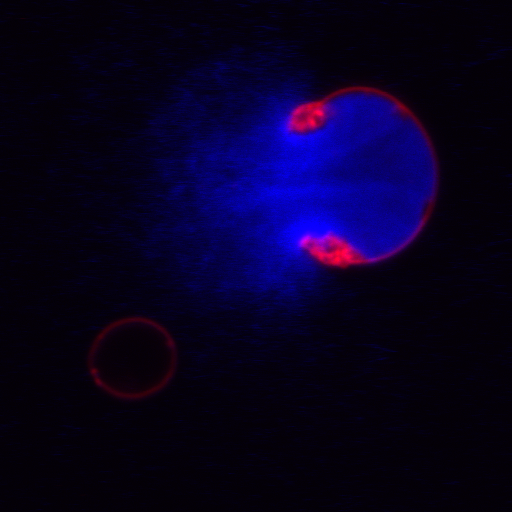
We want to understand how (immune cells) compute chemical signals and make decisions. Here a human neutrophil undergoing NETosis is shown. During this process the DNA (blue) is released and the cell memberane (red) ruptures (Neubert et al. Nature Communications 2018, Holzappel et al. Biophysical Reports 2023)